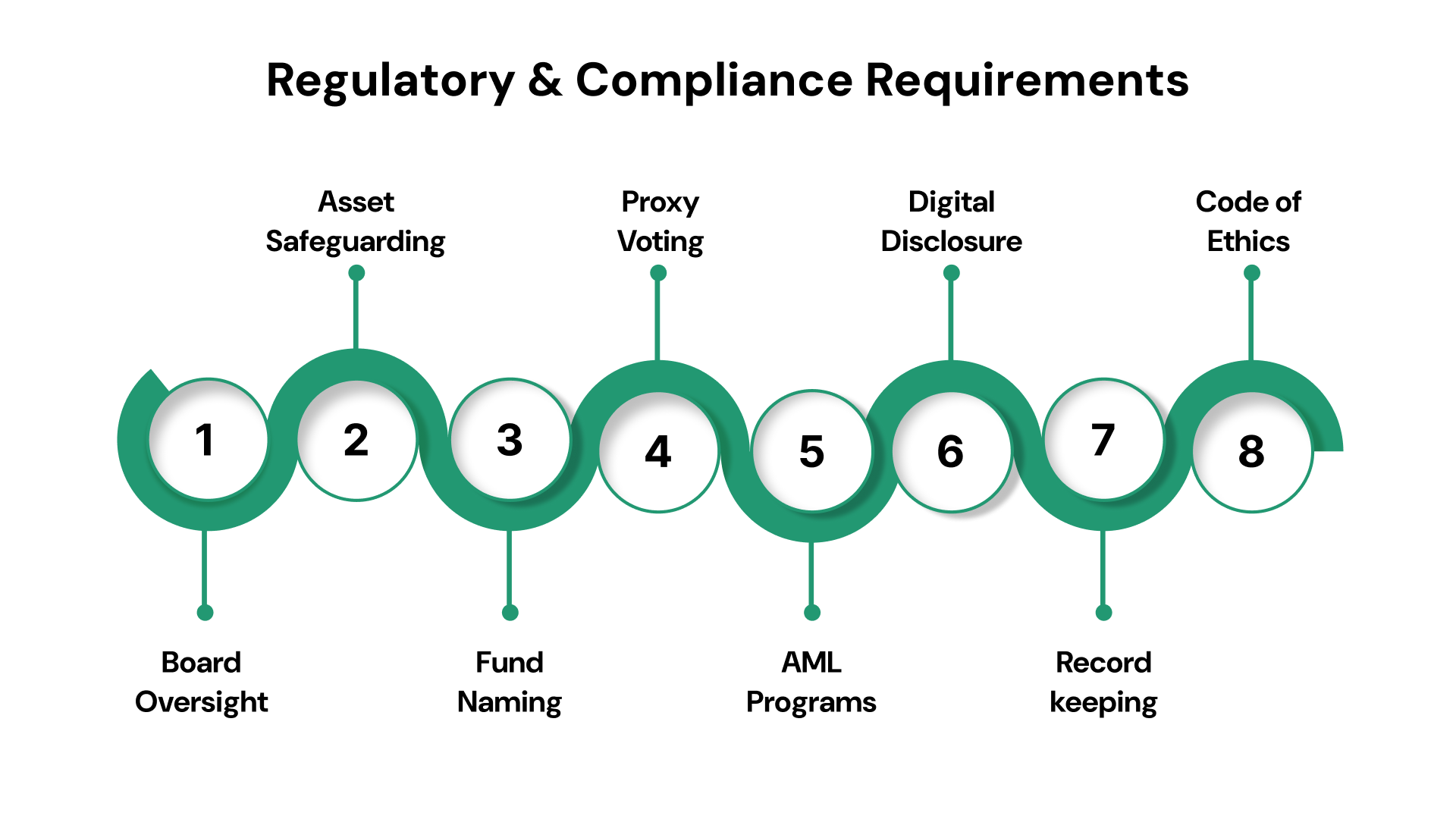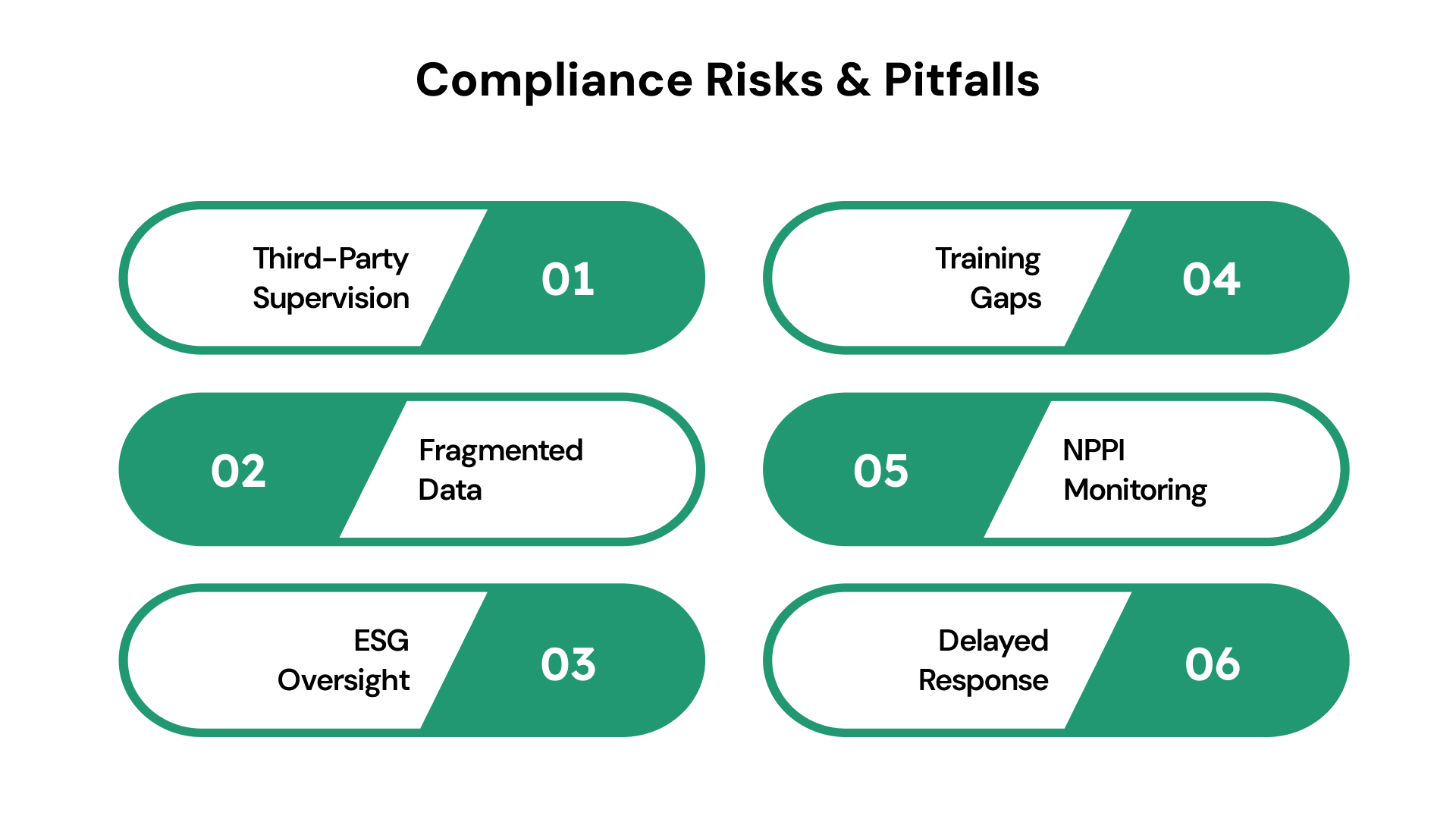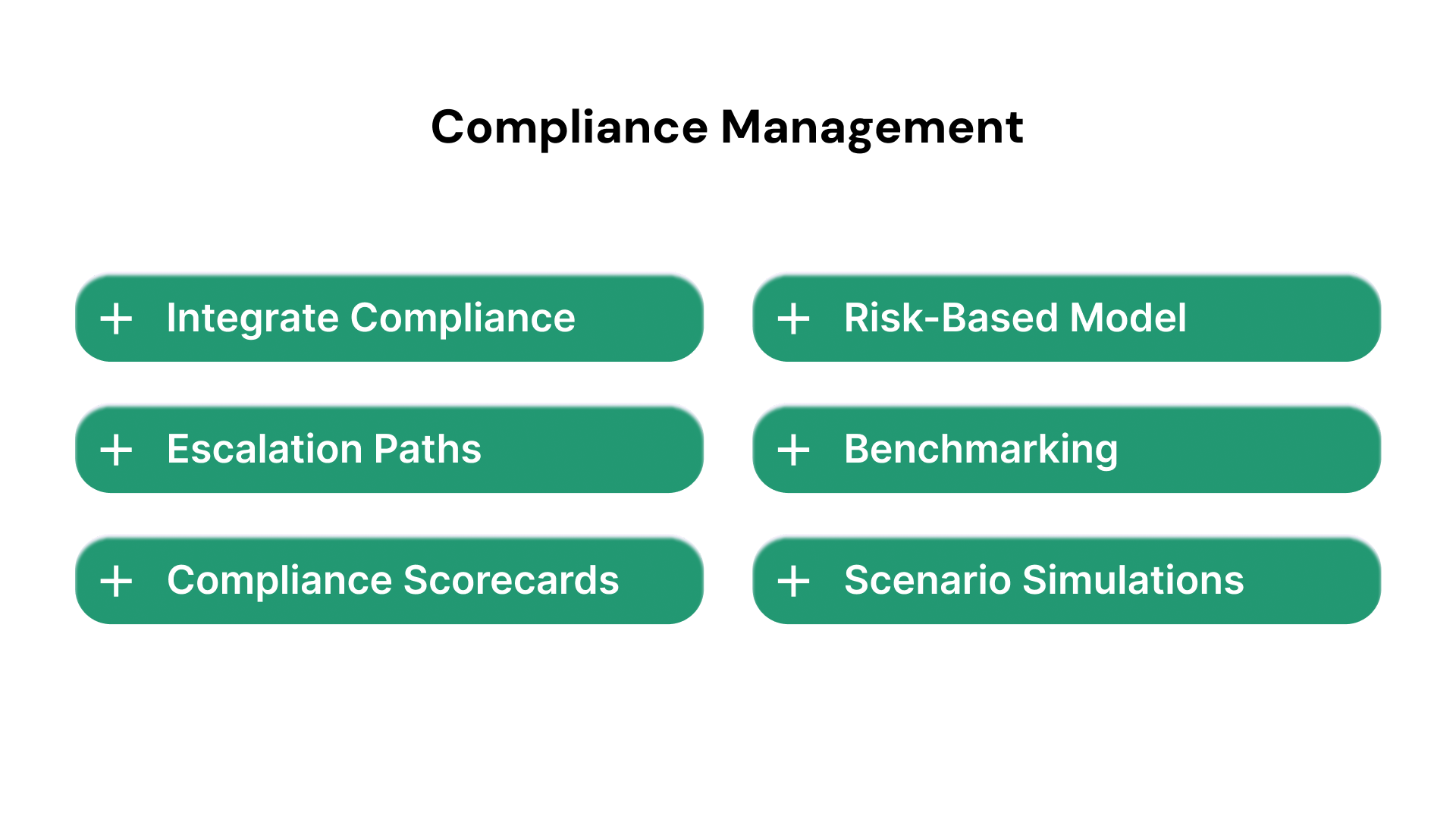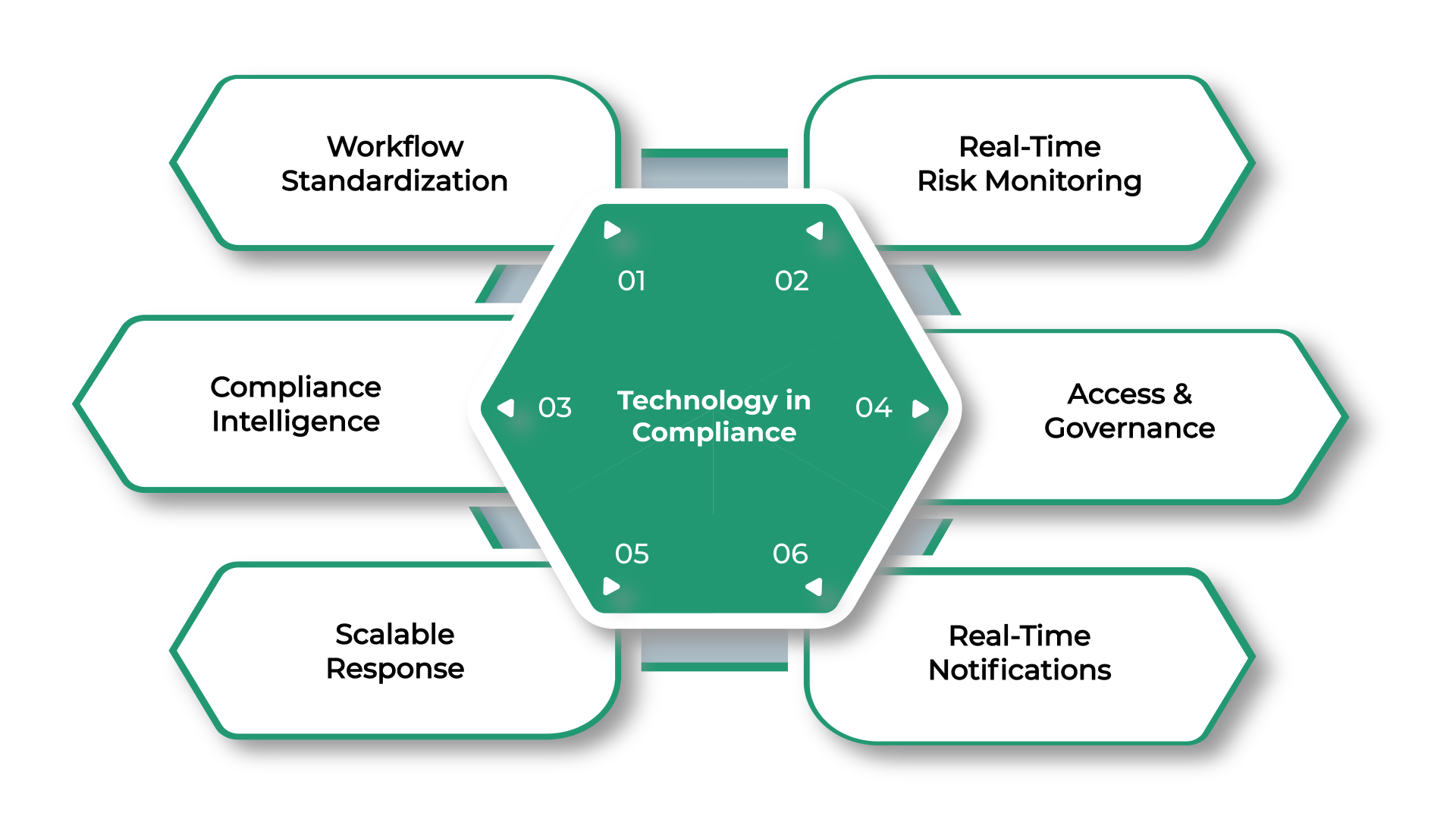Mutual Fund Companies Compliance: Essential Requirements Guide
Compliance in the mutual fund industry is all about creating a solid internal framework to ensure that every investment decision, disclosure, and communication meets legal and ethical standards. From how funds are structured and distributed to reporting and oversight, compliance is integral to every aspect of a mutual fund’s operations. Companies must navigate a range of laws like the Investment Company Act of 1940, the Securities Act of 1933, and SEC regulations, which are in place to protect retail investors and promote transparency. To stay compliant, firms need not only to understand these laws but also implement flexible systems that can keep up with ongoing regulatory changes, backed by strong governance, reliable data tracking, and proactive risk management.

Mutual fund companies play a key role in managing and growing retail investor capital. As their assets grow, they face more attention from regulators. These firms are now expected to meet higher standards for transparency, responsibility, and strong internal processes.
The size of the industry makes compliance even more important. In 2023, there were 7,222 mutual funds in the United States, and each one must follow a wide range of regulatory rules.
Regulators are tightening expectations around fund disclosures, voting practices, and ethical management. Mutual fund companies can no longer rely on basic checklists. They need flexible, tech-driven systems that provide real-time visibility and control. Without them, they risk penalties, loss of trust, and serious damage to their reputation.
Key Takeaways (TL;DR)
In this blog, we break down the key compliance requirements mutual fund companies must meet today, and how they can stay ahead of rising expectations.
- Compliance isn’t just paperwork. Mutual fund companies need systems that track rules, flag risks, and keep everything accountable.
- Checklists won’t cut it. Real-time oversight is now the baseline for staying on top of disclosures and approvals.
- Vendor gaps, weak ESG claims, and poor training are where most firms slip up.
- Compliance must be part of every decision, not an afterthought. KPIs help keep it on track.
- Without automation, firms fall behind. Tech is now the only way to keep compliance scalable and audit-ready.
Understanding Compliance in Mutual Fund Companies
Compliance in the mutual fund space involves building a strong internal framework that ensures every investment decision, disclosure, and communication aligns with legal and ethical standards. From fund structure and distribution to reporting and oversight, compliance touches every part of a mutual fund’s operations.
Mutual fund companies are subject to a complex set of laws, including the Investment Company Act of 1940, the Securities Act of 1933, and various SEC regulations. These frameworks are designed to protect retail investors, promote market integrity, and ensure transparent operations.
To stay compliant, firms must not only understand these rules but also implement systems that can adapt to frequent regulatory updates. This requires a combination of clear governance, reliable data tracking, and proactive risk management.
Why Compliance Is Critical for Mutual Fund Companies
In the mutual fund industry, compliance is foundational to maintaining investor trust and regulatory standing. As fiduciaries, fund managers handle billions in retail capital and must operate with clarity, consistency, and accountability.
Here’s why compliance remains central in 2025:
- Protecting Investor Interests: Mutual funds operate under the Investment Company Act of 1940, which enforces transparency and investor-first decision-making. Any breach, such as misrepresenting performance or hiding fees, erodes investor confidence and can trigger legal consequences.
- Ensuring Effective Governance: Fund boards are required to maintain independent oversight. Independent directors review fees, monitor performance, and manage conflicts, reinforcing ethical decision-making across operations.
- Meeting Rising Regulatory Expectations: The SEC continues to tighten standards on ESG disclosures, fund naming accuracy, and proxy voting transparency. Funds that fall short risk reputational harm and enforcement action, particularly under rules like Form N-PX and Rule 35d-1.
By embedding compliance into daily operations, mutual fund companies can better navigate this evolving landscape and strengthen long-term resilience.
Also read: Compliance in Investment Management: How to Navigate Challenges?
Key Regulatory and Compliance Requirements for Mutual Fund Companies

To remain compliant in today’s environment, mutual fund companies must align their operations with a wide set of SEC mandates and internal governance standards. These requirements span structural oversight, investor communication, risk prevention, and operational transparency.
1. Independent Board Oversight
At least 40 percent of a mutual fund’s board must be composed of independent directors. These directors not only approve advisory contracts but also evaluate potential conflicts, fee structures, and service quality. Their oversight is critical to maintaining the arm’s-length integrity expected in fund operations.
2. Custody and Safeguarding of Assets
Funds must hold investor assets with a qualified custodian and maintain fidelity bonds as part of risk mitigation. Custodial arrangements must be transparent and subject to regular internal reviews to prevent misuse or misallocation of funds.
3. Accurate Fund Naming and Strategy Alignment
Under Rule 35d-1, a fund’s name must match its actual investment strategy. For example, a “green energy fund” must allocate at least 80 percent of its assets accordingly. Firms must perform periodic reviews of holdings to ensure continued compliance with this rule.
4. Proxy Voting and Form N-PX Reporting
Funds are required to disclose how they vote on shareholder proposals through Form N-PX filings. These disclosures must be complete, timely, and accessible to investors, allowing them to assess the alignment of proxy decisions with fund mandates.
5. Anti-Money Laundering Programs
Compliance with the USA PATRIOT Act requires mutual fund companies to implement AML programs that include risk-based customer due diligence, suspicious activity monitoring, and employee training. These programs must be reviewed and updated regularly to remain effective.
6. Digital Disclosure and Online Accessibility
The SEC encourages funds to adopt an online-first approach for delivering prospectuses, annual reports, and key data points. Digital delivery must meet accessibility standards and maintain version control for audit integrity.
7. Comprehensive Recordkeeping
Funds must maintain books and records that document all investment transactions, shareholder reports, board minutes, and communications. These records should be easily retrievable and retained for the periods specified under the Investment Company Act.
8. Internal Code of Ethics and Monitoring
A documented Code of Ethics must guide employee conduct and personal trading. Compliance teams are expected to monitor adherence, log potential violations, and implement corrective actions when necessary.
These regulatory requirements are interconnected and evolve in response to market behavior, investor expectations, and enforcement trends. Mutual fund companies that treat compliance as a static checklist often fall behind. Proactive adaptation is now a baseline expectation.
Also read: Best Practices in Asset Management Compliance
Common Compliance Risks and Enforcement Pitfalls

Even with well-defined regulations, mutual fund companies often encounter practical challenges in execution. These gaps can lead to regulatory scrutiny, investor backlash, or operational disruption. Below are some of the most pressing compliance risks:
1. Inadequate Supervision of Third Parties
Many funds rely on external service providers for administration, distribution, or IT infrastructure. Without defined oversight protocols and periodic vendor audits, these partnerships can become weak points in the compliance chain, especially if a breach originates outside the core organization.
2. Fragmented Data and Reporting Systems
Using disconnected platforms to manage policies, investor communications, and SEC filings increases the risk of inconsistent disclosures. Without a centralized compliance infrastructure, tracking version histories or audit trails becomes time-consuming and error-prone during reviews.
3. Insufficient Oversight of ESG Claims
As funds increasingly market ESG-based strategies, failure to substantiate these claims with measurable data and consistent methodology invites greenwashing accusations. The SEC is actively reviewing ESG disclosures for substance and accuracy.
4. Training Gaps and Policy Drift
Compliance programs are only effective if employees and executives understand and follow them. Infrequent training, outdated manuals, or untracked acknowledgments can lead to non-compliance that’s hard to defend during an exam.
5. Failure to Monitor Non-Public Personal Information (NPPI)
Safeguarding investor data is not only a privacy concern but a regulatory one. Inadequate encryption, weak access controls, or a lack of breach response planning can result in violations under Regulation S-P.
6. Delayed Response to Regulatory Changes
With the pace of rule updates accelerating, especially around digital disclosure and shareholder rights, delays in policy adaptation can leave a firm exposed. Compliance teams must actively monitor and implement updates across documents, processes, and training material.
These pitfalls rarely result from intentional misconduct. Instead, they often reflect a mismatch between growing operational complexity and under-resourced compliance teams. A scalable, real-time approach to monitoring and enforcement is key to avoiding these missteps.
Also read: Six Common Compliance Management Pain Points and How VComply Solves Them
Best Practices for Compliance Management

To keep pace with evolving expectations from the SEC and maintain operational resilience, mutual fund companies must embed compliance into every layer of their governance model. The following best practices go beyond baseline policies and aim to institutionalize compliance as a continuous process:
1. Integrate Compliance into Strategic Decision-Making
Compliance should not operate in isolation. Involving compliance officers in product launches, marketing campaigns, or fund restructuring decisions ensures regulatory risks are addressed early, not retroactively. This alignment also reinforces a culture of accountability at the leadership level.
2. Adopt a Risk-Based Compliance Model
Not all risks are equal. Fund companies benefit from tiering their compliance focus based on the materiality of risks, fund complexity, and investor demographics. A risk-based framework helps allocate resources efficiently and ensures more scrutiny where the stakes are higher.
3. Formalize Escalation Paths and Incident Protocols
When compliance concerns arise, ambiguity in response procedures can create legal and reputational risks. Clearly defined escalation paths, issue-tracking mechanisms, and documentation requirements ensure that incidents are addressed promptly and traceably.
4. Benchmark Internally and Externally
Regularly compare internal controls and reporting practices against peer institutions, regulatory guidance, and historical audit findings. Benchmarking identifies gaps and offers real-world context for prioritizing improvements.
5. Establish Compliance Scorecards and KPIs
Quantifying compliance performance helps make it measurable, reportable, and actionable. Key indicators may include audit findings, policy acknowledgment rates, training participation, filing timelines, and issue resolution speed. These metrics drive continuous improvement and provide transparency to the board.
6. Conduct Scenario-Based Simulations
Annual mock audits, data breach drills, or whistleblower scenario simulations help teams prepare for real events. These exercises highlight process gaps, test responsiveness, and provide opportunities to refine playbooks before an actual incident occurs.
Strong compliance programs go beyond policies on paper. They rely on real-time data, clear ownership, and sustained engagement from staff across all levels. By operationalizing these best practices, mutual fund companies can reduce exposure and build a more resilient compliance posture.
Also read: Top Practices to Maintain Compliance and Mitigate Regulatory Risks
The Role of Technology in Compliance

Technology is no longer an accessory in compliance programs. For mutual fund companies facing tighter deadlines, growing data volumes, and heightened scrutiny, a digital-first approach is critical for real-time visibility, scale, and control.
1. Workflow Standardization Across Entities and Products
For firms managing multiple funds or operating across jurisdictions, inconsistencies in how compliance tasks are executed can create audit vulnerabilities. A compliance platform allows for standardized procedures across fund types, ensuring consistency in reporting, disclosure, and documentation across the organization.
2. Real-Time Risk Surveillance
Modern platforms can flag anomalies such as missing fund holdings data, proxy voting delays, or staff with incomplete training in real time. This proactive surveillance enables compliance teams to intervene before issues escalate into reportable violations or investor complaints.
3. Integrated Compliance Intelligence
By aggregating data from fund performance systems, policy trackers, audit logs, and regulatory updates, compliance platforms can offer analytics dashboards that not only monitor status but uncover patterns. For example, if one fund repeatedly misses disclosure deadlines, the system can identify underlying bottlenecks in staffing or approvals.
4. Controlled Access and Information Governance
Ensuring that only the right personnel have access to sensitive investor data or restricted policy documents is crucial. Role-based access, digital signature tracking, and version locking reduce the chance of unauthorized access, outdated documentation use, or non-compliant edits.
5. Scalable Regulatory Response
When a rule changes, such as new ESG disclosure requirements or amendments to the Names Rule, compliance systems can push updates instantly, trigger task assignments, and log acknowledgments. This reduces the lag between regulation and implementation, which is where many firms stumble.
6. Continuous Readiness for Audit
With data organized, access-controlled, and time-stamped, technology eliminates the last-minute scramble often associated with SEC exams. Audit-readiness becomes a continuous state rather than a reactive event, giving compliance teams the upper hand during reviews.
Technology enables mutual fund companies to move from static, manual processes to dynamic systems of record and response. The result is not just better compliance outcomes, but a more scalable and efficient operating model.
Also read: Understanding GRC Technology and Its Importance
How VComply Helps Mutual Fund Companies
VComply is a cloud-based compliance management platform built to meet the specific needs of mutual fund companies. As compliance demands grow more complex, VComply helps streamline operations, enforce accountability, and maintain regulator-ready transparency without increasing administrative overhead.
Key Features:
- Automated Workflow Management: VComply helps automate recurring compliance tasks such as Form N-PX filings, annual policy certifications, and board review cycles. Custom workflows reduce the risk of missed steps and enable consistent execution across funds.
- Centralized Policy and Document Control: All compliance policies, codes of ethics, contracts, and procedural documents are stored in one secure, version-controlled location. Built-in acknowledgment tracking ensures stakeholders are aligned with current policies at all times.
- Real-Time Monitoring and Alerts: The platform includes dashboards that surface overdue tasks, unresolved risks, and pending document reviews. These real-time alerts help compliance teams respond before issues trigger regulatory concern.
- Audit Trail and Evidence Capture: Every action within the platform is logged automatically, creating a detailed audit trail. This makes it easy to retrieve historical records during internal assessments or when preparing for SEC reviews.
- Risk and Exception Tracking: VComply allows users to identify compliance gaps, assign ownership, and monitor resolution status through visual risk dashboards. This supports proactive issue resolution and board-level reporting.
With its intuitive interface and modular structure, VComply enables mutual fund companies to scale their compliance programs without adding unnecessary complexity. Whether you manage a single fund or dozens, the platform provides the control, clarity, and continuity needed to stay compliant year-round. Request a personalized demo now!
Final Thoughts
Regulatory compliance is no longer just a legal requirement for mutual fund companies. It is a strategic function that shapes investor confidence, operational integrity, and long-term viability. With evolving expectations around disclosures, governance, and risk oversight, firms must shift from reactive checklists to proactive, integrated systems.
Technology plays a key role in this transformation. Platforms like VComply allow compliance teams to centralize operations, track obligations in real time, and ensure that policies are not only documented but actively enforced.
Start your free trial to see how VComply can support your compliance goals.
FAQs
1. What are the main compliance requirements for mutual fund companies?
Mutual fund companies must comply with SEC regulations, including board independence, custody of assets, accurate fund naming, proxy voting disclosures, anti-money laundering (AML) programs, digital reporting, recordkeeping, and internal ethics monitoring.
2. What is the role of the SEC in mutual fund regulation?
The SEC oversees mutual funds to protect investors, ensure transparency, and enforce compliance with laws such as the Investment Company Act of 1940. It monitors fund disclosures, governance, and reporting practices.
3. Why is compliance important for mutual fund companies?
Compliance protects investor interests, reduces legal risk, ensures ethical governance, and supports long-term business resilience. It’s essential for maintaining trust and regulatory standing.
4. What are common compliance risks in mutual funds?
Key risks include weak oversight of third parties, inconsistent ESG claims, data protection failures, training gaps, and delayed response to regulatory changes.
5. How can technology improve mutual fund compliance?
Technology helps automate workflows, monitor real-time risks, maintain audit trails, and standardize procedures across funds—making compliance scalable and audit-ready.

